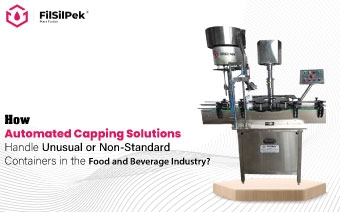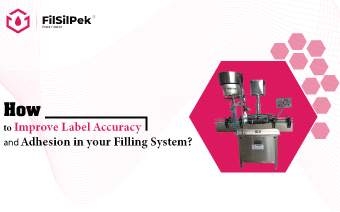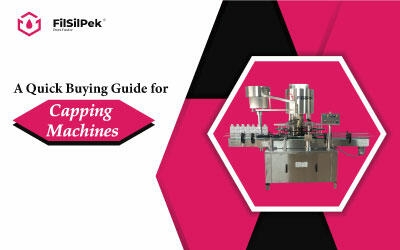The Role of Automation in Modern Capping System: Benefits and Challenges
Let’s explore how you can fine-tune these aspects for a smooth and efficient labelling process.
Why Label Accuracy and Adhesion Matter?
Label accuracy and adhesion are critical for several reasons. Accurate labelling ensures that your product information, branding, and legal requirements are all clearly communicated. Poorly placed or misaligned labels can give a negative impression of your product, reducing its shelf appeal and potentially causing confusion or misrepresentation. On the other hand, poor adhesion can lead to labels peeling off or not sticking properly, which can result in non-compliance with regulatory standards and customer dissatisfaction. In industries where precision and consistency are key, getting these elements right is non-negotiable.
Tips to Improve Label Accuracy in Your Filling System
- Calibrate Your Labelling Equipment Regularly
Regular calibration of your labelling equipment is essential for maintaining accuracy. Over time, even the best machinery can drift out of alignment, leading to crooked or off-centre labels. Make it a routine to check and adjust your equipment to ensure everything is aligned correctly. - Use High-Quality Labels and Adhesives
The quality of your labels and adhesives plays a significant role in accuracy and adhesion. Opt for labels made from high-quality materials that are designed for your specific application. Cheaper labels may save money upfront but can cause more issues in the long run. - Optimise the Labelling Environment
Temperature, humidity, and cleanliness can all impact label accuracy and adhesion. Ensure that your labelling environment is well-controlled and free from dust or debris that could interfere with the process. Consider investing in a climate-controlled area if your facility is prone to temperature fluctuations. - Test Different Labelling Speeds
Sometimes, simply adjusting the speed of your labelling process can make a big difference. If your labels are not applying correctly, try slowing down the speed to see if that improves accuracy. You may find that a slight reduction in speed yields a significant improvement in label placement. - Train Your Staff Thoroughly
Even with the best equipment, human error can still cause problems. Ensure that all operators are fully trained on how to use the labelling system, including how to perform routine checks and adjustments. A well-trained team can spot potential issues before they become major problems. - Match the Adhesive to Your Container Material
Not all adhesives work well with every container material. It’s important to choose an adhesive that is compatible with the type of container you’re using, whether it’s glass, plastic, or metal. Some materials may require stronger adhesives, while others might need ones that allow for some flexibility. - Prepare Your Containers Properly
Ensure that your containers are clean and dry before labelling. Any residue or moisture can prevent the label from sticking properly. Implement a quality control step where containers are wiped down or blown with compressed air before labelling. - Consider the Labelling Environment Again
Just like with accuracy, the environment can affect adhesion. For instance, labels might not stick as well in cold or damp conditions. Adjusting the environment or choosing labels designed for specific conditions can help maintain strong adhesion. - Test Adhesion Over Time
Labels may appear to stick well initially but could start to peel off after some time. Conduct tests to see how well the labels adhere after several days, weeks, or even months. This will help you identify any long-term adhesion issues that need to be addressed. - Use a Labelling System with Pressure-Sensitive Application
Pressure-sensitive labels often provide better adhesion as they are applied with consistent force across the entire surface. Ensure your system is calibrated to apply the right amount of pressure based on the label and container being used.
Enhancing Label Adhesion: What You Need to Know
Conclusion
Getting your labels spot on is key to making your products shine and keeping customers happy. With the right tools and a bit of attention to detail, you can easily boost both accuracy and adhesion in your filling system.
Ready to up your labelling game? Filsilpek’s Automatic Labelling Machines are designed to make your job easier, with precision and reliability you can count on. Reach out to us today to see how we can help you streamline your labelling process and keep things running smoothly.
How Automated Capping Solutions Handle Unusual or Non-Standard Containers in the Food and Beverage Industry?
The food and beverage industry faces significant challenges when it comes..
How to Improve Label Accuracy and Adhesion in your Filling System?
Automation in modern capping systems is transforming the packaging industry by increasing efficiency, improving…
A Quick Buying Guide for Capping Machines
Capping machines are essential in packaging, making sure products are sealed tightly and efficiently. As packaging needs evolve, choosing the right capping machine becomes crucial…



